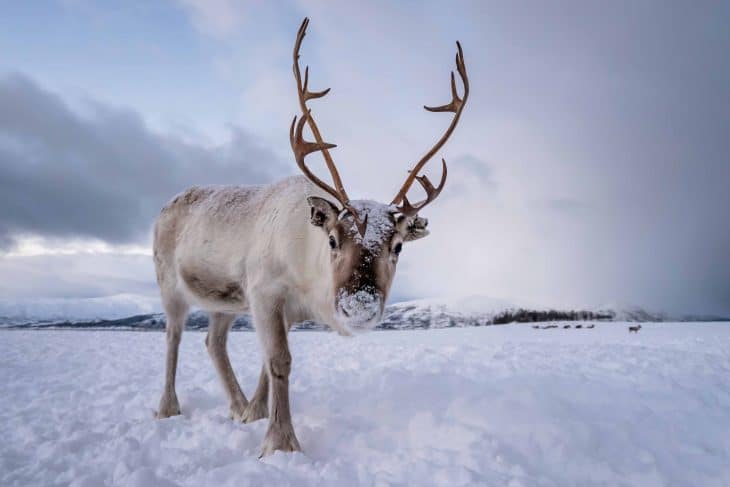
The reindeer is popular in our modern culture because of Christmas and Santa Claus’ Rudolph the Red-Nosed Reindeer. You can usually find them in the Asian, European, and North American regions at the far out north. These areas have rugged landscapes and frigid winter temperatures that are perfect as their natural habitat.
Reindeer come in 14 subspecies, and although two of them are already extinct, their population is still in 7 figures (about 3.5 million in North America, 1 million in Eurasia, and 3 million in northern Europe). But don’t get overconfident, the IUCN has listed the reindeer as ‘vulnerable’ because of its population decline of more than 35% over the last 25 years. Now, here are 40 facts about reindeer that you need to know!
- Caribou is the other name of the reindeer.
- Scientifically, it is called Rangifer tarandus.
- The name ‘reindeer’ can also be its plural form. However, some dictionaries have caved in and allowed the term “reindeers.”
- They love to eat herbs, mosses, ferns, grasses, shoots, and leaves.
- Notably, the reindeer became popular because of Santa Claus as Rudolph the Red-Nosed Reindeer.
- The reindeer is indigenous to the cold mountainous areas of northern Europe, including North America, and Siberia.
- They greatly vary in size and color. The smallest breed is the Svalbard reindeer, while the biggest breed is the boreal woodland caribou.
- Found in the Svalbard archipelago of Norway, the male Svalbard reindeer averages 65 kg to 90 kg (143 lbs to 198 lbs) in weight, while the female is about 53 kg to 70 kg (116 lbs to 154 lbs).
- The boreal woodland caribou is another class of reindeer found in North America. They typically weigh at least 110 kg to 210 kg or 242 lbs to 462 lbs.
- Some of its subspecies are scarce, now with 2 no longer existing: the Queen Charlotte Islands caribou and the Arctic reindeer.
- A reindeer’s longevity is roughly up to 15 years in its natural habitat and up to 20 years in the care of humans.
- People who live in the tundra have relied on caribou for their daily needs.
- Because of their significance to various cultures, the reindeer (including their subspecies) have names in numerous languages.
- Reindeer are wrapped with hair all over their body.
- In Greenland, reindeer hunting has high importance to the Kalaallit (indigenous people of Greenland), sporting hunters, both residents and tourists.
- Their population has declined by more than 50% in the last two decades.
- Supposedly, its current population is under 2 million.
- In contrast to most deer species where only males have antlers, both male and female reindeer can grow antlers annually.
- A male’s antlers can reach the length of up to 50 inches, while a female’s grow for up to 20 inches.
- Their antlers are edible (apart from eastern medicine or a health supplement), you can use them to make gelatin, or for baking recipes.
Was this page helpful?
Our commitment to delivering trustworthy and engaging content is at the heart of what we do. Each fact on our site is contributed by real users like you, bringing a wealth of diverse insights and information. To ensure the highest standards of accuracy and reliability, our dedicated editors meticulously review each submission. This process guarantees that the facts we share are not only fascinating but also credible. Trust in our commitment to quality and authenticity as you explore and learn with us.


